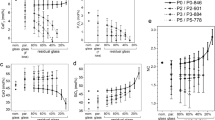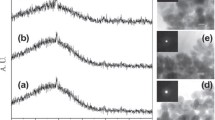Abstract
The rate of in vivo degradation and level of bioactivity of bioactive glasses are composition dependent [1]. By altering bioactive glass composition, the rate of resorption can be controlled. The network connectivity of a glass can be used to predict various physical properties of the glass including its solubility and, hence, its bioactivity [2]. Glass solubility increases as network connectivity is reduced. Glasses in the soda-lime phosphosilicate system were studied. The initial choice of composition was based on phosphate content and low network connectivity. A systematic substitution of calcium oxide for sodium oxide on a molar basis was made in order to examine the influence of sodium oxide content on the glass properties while keeping the network connectivity constant. The glass transition temperature and the peak crystallization temperature were seen to decrease linearly with increasing sodium oxide content. Thermal expansion coefficient and glass density were also seen to be related to sodium oxide content. Preliminary in vitro biocompatibility studies revealed that the glasses of higher sodium oxide content were associated with a cytotoxic response. The measurement of media pH indicated that this cytotoxic effect was due to ion exchange reactions at the glass surface.
Similar content being viewed by others
References
Y. Ebisawa, T. Kokubo, K. Ohura and T. Yamamuro, J. Mater. Sci.: Mater. Med. 1 (1990) 239.
R. G. Hill, J. Mater. Sci. Lett. 15 (1996) 112.
D. F. Williams, Mater. Sci. Tech. 3 (1987) 797.
L. L. Hench in “Biomaterials science. An introduction to materials in medicine”, edited by B. D. Ratner, A. S. Hoffman, F. J. Schoen and J. E. Lemons (Academic Press, San Diego, 1996) p. 73.
O. H. Anderson, G. Liu, K. Kangasniemi and J. Juhanoja, J. Mater. Sci.: Mater. Med. 3 (1992) 145.
L. L. Hench, J. Amer. Ceram. Soc. 74 (1991) 1487.
N. H. Ray in “Inorganic polymers” (Academic Press, London, (1978) p. 5.
M. W. G. Lockyer, D. Holland and R. Dupree, J. Non-Cryst. Solids 188 (1995) 207.
Z. Strnad, Biomaterials 13 (1992) 317.
O. H. Anderson, J. Mater. Sci.: Mater. Med. 3 (1992) 326.
N. H. Ray in “Inorganic polymers” (Academic Press, London, (1978) p. 91.
P. Ducheyne, A. El-Ghannam and I. Shapiro, US Patent No. 5 676 720 (1997).
E. A. Di Marzio and J. H. Gibbs, Polym. Sci. 40 (1959) 121.
A. El-Ghannam, P. Ducheyne and I. M. Shapiro, J. Biomed. Mater. Res. 29 (1995)359.
Author information
Authors and Affiliations
Rights and permissions
About this article
Cite this article
Wallace, K.E., Hill, R.G., Pembroke, J.T. et al. Influence of sodium oxide content on bioactive glass properties. Journal of Materials Science: Materials in Medicine 10, 697–701 (1999). https://doi.org/10.1023/A:1008910718446
Issue Date:
DOI: https://doi.org/10.1023/A:1008910718446




